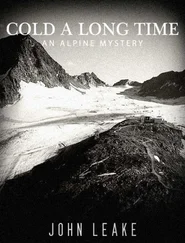“The Treasury is probably Vanaheim’s best-known feature,” he told me as we slowed to a mosey, trapped behind a group of old tourists in the bottle-neck. “It’s the first big attraction a man sees when he enters at Snaefellsjökull. An artist’s representation of it is used on the front cover of Magnus Valison’s The Fox in the Snow .”
“Yeah, I read that. So, the Treasury’s the one with the big building face carved directly into the stone, right? All decorated with spears and shields and stuff? It looked pretty impressive on the book cover…”
“Yes, that is it, but the first big attraction that we will show you is impressive even more so.” Just as he said this, the avenue opened up to another big cavern. “This is the temple of the Refurserkir.”
Refurserkur literally means something like “fox-shirter,” and on the map that I’d bought the temple before me was marked with a little cartoon fox head. Cameras aren’t allowed in Vanaheim, but even if I’d had one, it couldn’t have done justice to the real thing.
The tourists in front of us were gawking in awe.
The front of the temple was actually shaped like a gigantic fox head, carved out of one big mass of rock. I couldn’t believe the detail of the thing, and on such a massive scale.
“Now why isn’t this called the Hall of Foxes?” I asked.
“Because this is the Hall of the Fox-Shirters,” the son answered me. “The men become fox. This is we. My father and I. We are Refurserkir.”
“Really?” I pulled my eyes away from the temple to see if he was joking. “I thought the Refurserkir were like ninjas or something.”
“We are like foxes that are full of tricks and stealth. That is why we wear the fur of foxes.”
“You’re kidding, right? I mean, don’t take this as an insult, but the two of you don’t seem particularly sneaky to me.”
“Of course we have other clothes for when we must be sneakier. These clothes are more for the resilience of the fox to cold.”
“Huh. I just thought you guys would be more imposing.”
“Like the fox, we are not so imposing to look at, but we—”
I don’t know if the father understood what was being said or if he just didn’t like the amount of talking going on in general, but he suddenly smacked the son on the back of the head and grumbled something at him in Vanaheimic.
The son rubbed where his father had hit him. “All right… It is true. We in actuality are only servants of the Refurserkir. But we are trained in their ways. Trust that we could impose you if such imposition were to become necessary.”
“Well, show me a trick or something.”
“Okay. Watch this.” He started to reach inside his parka.
I can’t say exactly how it happened, then—it was all kind of blurry—but the next thing I knew, the father had somehow spun around and thrown the son to the ground. And the son just lay there for a minute.
“Maybe I should not show you any tricks after all,” he said, eventually, accepting my hand to help him to his feet.
“Yeah, cool…” I said. “Can I go inside the temple, though?”
WIBLE & PACHECO
Though Our Heroine and the actor (whose words remained bright in our minds) had left the door unlocked, it seemed that no one else had infiltrated the interior of the librarian’s store. We were, to all appearances, alone. As the store was still immersed in its opaque bath of shadows, however, the accuracy of all appearances was difficult to ascertain. We treaded, therefore, carefully to the switchbox in back—neither fools nor angels—and dispelled the darkness.
Newly illuminated in the light of halogen, the amount of potential information with which we were faced overwhelmed us. Our Heroine had led us here, and we were thus confident that none of the books here shelved could fail to yield some relevant information concerning the case—just as no shell can fail to speak of the ocean or of the various species of oceanic mollusk-hunting fauna. Yet the cost in time of extracting the information must be balanced against the information’s value. Such equations were not easy to calculate on the basis of covers alone, however, and consequently it would not be a simple matter to narrow our search.
We walked the aisles of the store, then, with eyes open for the incongruous. The truly antique books in their glass display cases were kept separate from the merely rare, yet—other than this—the system according to which the store was arranged remained inscrutable to us. The traditional practice of organization in reference to author’s surname had seemingly been eschewed in favor of a method far more arcane.
This raised the question: How does one locate the incongruous in a system that emulates chaos? In the general semblance of maelstrom, what order was there from which to deviate? Most of the volumes possessed no commonalities save those of age and scarcity. On any given shelf, only the loosest of thematic or biographical ties bound together two adjacent tomes.
So engrossed were we in our search that we did not perceive the opening and closing of the store’s front door. Unless he’d already been there before we arrived… We heard him speak before we saw him.
“Egad! You fellows nearly frightened the dickens out of me!”
It took us a moment to recognize this nondescript man with his thin gray hair and thin gray suit; we stood quietly appraising him for a moment before his ridiculous phraseology and the leather valise clutched to his side reminded us of his identity.
“You are the literary agent. Philip Leshio. You represent Magnus Valison. And you also represented Shirley MacGuffin, before she died.”
“Right ho.” He grinned at us maliciously. “And you’re those chaps who made such a botch of the Bean-Ymirsons’s L’anse aux Meadows [28] L’anse aux Meadows is the site of an early Viking settlement in Newfoundland from circa 1000 A.D. The details of the strange crimes that occurred there in 1980 can be found in Would as Leif , the aforementioned seventh volume of Valison’s The Memoirs of Emily Bean .
case, yes?”
“If that is how you choose to remember it.”
“Yes, so. Is Jorgen anywhere to be found? I have two books right here that I think he’d be greatly interested in.” He patted his valise as he spoke.
“He is not on the premises, to our knowledge.”
“Ah. Well, I’ll just toddle off then. Valedictions!”
“You are in town for Ms. MacGuffin’s funeral, we assume.”
He paused on his way toward the door. “Is this to do with her murder? She never earned me a single schilling, that girl, with her houses and Hamlet s and scribblings in the sand, but I always had a special place in my heart for her.”
“Yes, she shall be missed. We knew her only slightly, though we were enthusiasts of her works. Indeed, we look forward to reading her Hamlet , if ever you secure a publisher.”
“If you refer to the preposterous Thomas Kyd emulation that she was working on, I’m afraid you’ll be waiting a rather longish time. I don’t believe she ever quite finished it. And even had she done so, I don’t suppose I could find a publisher for it.”
“Indeed?” we asked.
“Yes, indeed,” he answered. “For one thing, who—besides, apparently, the two of you—would be enticed by the prospect of a perfect imitation of a minor sixteenth-century playwright? Few enough read the Bard, these days, and all the fewer Kyd.”
“We see. Yet—”
“And, for another thing, there are simply far too many overzealous Shakespeareans in the world, and I’m afraid most of them would take her play as nothing less than a straight up ‘Nuts to you!’ She actually had the audacity to include some of the true Hamlet ’s most memorable moments, nigh verbatim, in her version. Polonius’s speech to Laertes, the gravedigger scene… The upshot being, of course, that Shakespeare’s greatest play was little more than a polite knock off of Kyd. I found the suggestion a trifle insulting myself, and I am not of a particularly sensitive temperament, I assure you.”
Читать дальше












